What's New
Displaying results 3791 - 3800 of 4052
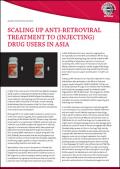
Resource | Publications,
Although anti-retroviral treatment (ART) is not traditionally considered a central concern in the harm reduction agenda, from a global public health perspective, Asian Harm Reduction Network (AHRN) believes that ART remains a very important service within a comprehensive HIV/AIDS treatment and care model. As such, AHRN’s analysis and experience in national, regional or international initiatives which have operational goals determined and evaluated through the provision of anti-retroviral (ARV) medications to people living with HIV/AIDS (PLWHA), demonstrates that we should applaud such treatment services on the principle that all people, regardless of ethnicity, religion, gender or sexual orientation, should receive quality treatment and health care.
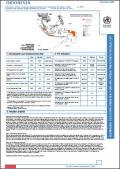
Resource | Publications,
Indonesia's health system is highly decentralized; provincial and district health services have significant autonomy to determine policies, priorities and financing. However, the major source for the national budget for HIV/AIDS is the Global Fund to Fight AIDS, Tuberculosis and Malaria, through which activities in 17 provinces are supported. In 1994, the National AIDS Commission was established as a secretariat to coordinate the multisectoral approach. Provincial AIDS commissions have been established in every province, headed by the vice-governor. Local initiatives for antiretroviral therapy have been launched throughout Indonesia, under the commitment of local authorities and of physicians taking care of people living with HIV/AIDS. The National HIV/AIDS Strategy for 2003–2007 identifies the following programme priorities – HIV/AIDS prevention, care and treatment and support for people living with HIV/AIDS, surveillance, operational research, multisectoral coordination and a sustainable response.

Resource | Publications,
In an effort to keep abreast of rapid changes in the landscape of the HIV pandemic, WHO and UNAIDS
report semiannually on progress toward "3 by 5". The first update was presented at the XV International AIDS Conference in Bangkok, Thailand, in July 2004.
This second report measures progress made by countries and describes how international partners are
supporting their efforts. In addition, it summarizes how the building blocks of antiretroviral (ARV) therapy programmes are being put into place and how issues beyond treatment are being addressed.
It provides examples of country progress and a global estimate of the number of people receiving ARV therapy, and it assesses how well the therapy is working. It also identifi es some of the challenges faced in resource-constrained settings and how these are being met by improving health care systems, links between prevention and treatment and providing equal access to quality care.
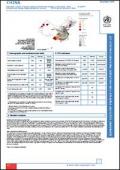
Resource | Publications,
China has a low overall HIV prevalence but high prevalence in certain population groups and at some sites. WHO/UNAIDS estimated that 840,000 people in 0–49 years old were living with HIV/AIDS at the end of 2004, and the estimated HIV prevalence was 0.07% (with a low estimate of 0.05% and a high estimate of 0.08%). There are geographical differences in prevalence levels within sub-populations. Since 2001, reported HIV/AIDS cases have increased at a 30% annual rate, most likely as a result of increased surveillance. HIV is reported from 31 of China’s 34 provinces and other administrative units on mainland China.
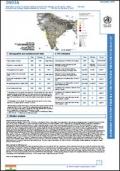
Resource | Publications,
India’s population surpassed 1 billion in 2001; 67% live in rural areas and 33% in urban areas. India is estimated to have the second largest population of people living with HIV/AIDS, next to South Africa. An estimated 5.13 million individuals currently live with HIV across all states in India. In areas that are more severely affected, the epidemic has started to challenge recent development achievements and to raise fundamental issues of human rights concerning people living with HIV/AIDS.
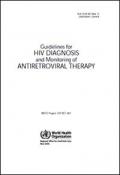
Resource | Publications,
HIV/AIDS is among the greatest health crisis ever faced by humanity. Already this pandemic has killed 20 million people. Today, 40 million people are living with HIV. Each year, 3 million are dying of HIV/AIDS. However, most of these deaths could be prevented if they had access to antiretroviral therapy (ART).
In September 2003, WHO declared that failure to provide antiretroviral therapy to patients in developing countries a global public health emergency. Accordingly, WHO with UNAIDS and partners set a target of providing 3 million people in developing countries with antiretroviral treatment by the end of 2005 (the “3 by 5” initiative). While this is an interim target, long-term goal is of universal access to ART for all those who need it.
The primary objective of the antiretroviral therapy is to prolong the survival as well as improve the quality of life of the people living with HIV/AIDS. By bringing down the HIV viral load to sustained undetectable level, it is expected that ART will contribute also to HIV prevention.
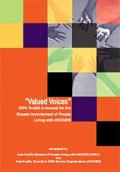
Resource | Tools,
This toolkit has been written for anyone that wants to know more about GIPA – the Greater Involvement of People Living with HIV and AIDS. It has been prepared by consultants working for the Asia-Pacific Network of People Living with HIV/AIDS (APN+), with support from the Asia-Pacific Council of AIDS Service Organisations (APCASO) and the Seven Sisters Coalition. With this toolkit, this consortium aims to convince you that GIPA is both important and possible and to provide practical steps to strengthen the involvement of people living with HIV in the creation and implementation of AIDS policy and programs. GIPA is not an end in itself; it is a tool to enable us to achieve our ultimate goals: improving the quality of life of all people living with HIV in this region and preventing further HIV infections.
The processes and workshop exercises outlined in this toolkit are written for PLWHA groups and networks and community-based organisations in Asia-Pacific. It can be easily adapted for use by governmental departments and international organisations, too. This is a resource document.
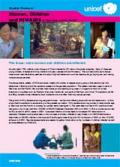
Resource | Publications,
An estimated 1,700 children under the age of 15 are infected by HIV around the globe everyday. Many of these are young children, infected at birth by mothers who are unaware of their HIV status. The number continues to rise as more women are infected by partners who adopt high risk behaviours such as injecting drugs, buying sex, and having multiple sexual partners.
One recognizable pattern of HIV transmission starts with sudden increases among groups that practice high-risk behaviours, following which the epidemic spreads to the general population. This pattern has been seen in parts of East Asia and the Pacific. Sex workers, their clients and/or injecting drug users no longer form the bulk of new infections in countries such as Thailand, Myanmar, Cambodia, and parts of Viet Nam and China. The epidemic profile is shifting towards wives infected by their husbands who are often their only sexual partners.
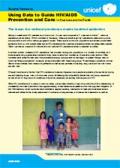
Resource | Publications,
Although overall adult HIV prevalence in Asia is low - 0.4 per cent compared to 7.4 per cent in Africa - national prevalence varies widely. Within countries of the region, there are disturbingly high prevalence rates among some sub-populations and within various geographic areas. These locations and sub-populations are where concentrated epidemics build up, with substantially higher HIV prevalence than national prevalence levels can adequately capture.
A marked, sudden increase of HIV prevalence has occurred among sub-populations in a number of countries, and those experiencing a generalized epidemic bring lessons about the importance of proactive, early actions. Often countries have acted too late when the prevalence among sub-populations has begun to spread through what is known as "bridge populations" or people closely associated with these sub-groups. These bridge populations include clients of sex workers, their wives and girlfriends as well as sex partners of injecting drug users and men who have sex with men.
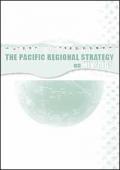
Resource | Publications,
The Pacific Regional Strategy on HIV/AIDS (2004-2008) builds on a vision for the Pacific, where the spread and impact of HIV/AIDS is halted and reversed; where leaders are committed to leading the fight against HIV/AIDS; where people living with and affected by HIV are respected, cared for and have affordable access to treatment; and where all partners commit themselves to these collective aims with the spirit of compassion inherent in Pacific cultural and religious values. The goal of the strategy is to reduce the spread and impact of HIV/AIDS, while embracing people infected and affected by the virus.
The strategy provides a framework for national and regionally funded activities throughout the Pacific. It has three main purposes: to increase the capacity of the Pacific Island countries and territories to provide an effective and sustainable response to HIV/AIDS; to strengthen coordination, and mobilize resources and expertise; and to assist countries to achieve and report on their national and international targets for HIV/AIDS.





